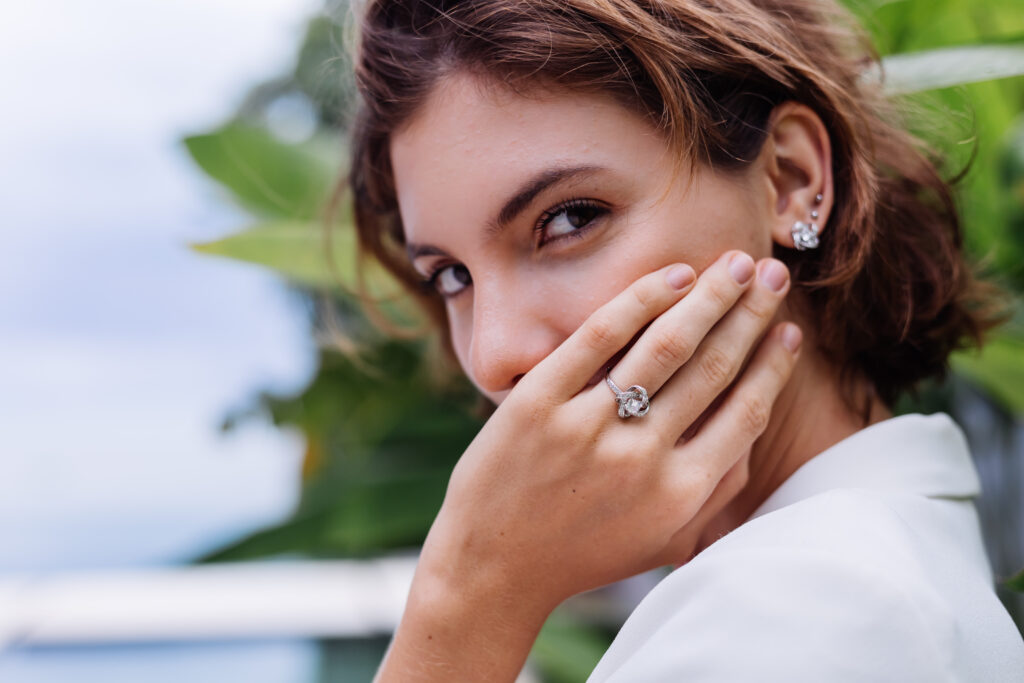Since the dawn of time, jewelry has served a significant role in expressing oneself and cultural identity. Wearing jewelry, however, can be more than simply an aesthetic choice for a few individuals since they may be allergic to it, which can cause irritation and discomfort. These allergies, which can range in complexity from severe skin rashes to minor itchiness, tend to be brought on by responses to certain compounds or metals used in jewelry. We are here to educate our readers on effective management techniques, jewelry allergies, and their origins. so that everyone can wear their most beloved ornaments without worrying.
Understanding jewelry allergies
Jewelry allergies, also known as allergic contact dermatitis or contact dermatitis, usually happen when your skin comes into touch with certain chemicals that set off an allergic response. About 10–20% of people have a certain level of nickel allergy or sensation. Materials like Silver, gold, chromium, and cobalt contain alloys with allergies-triggering metals that might trigger reactions to allergies.
Symptoms of jewelry allergies may include:
- Swelling and tenderness
- Dry, scaly patches
- Blistering or peeling skin
- Rash at the spot of contact
- Itchy, red, or inflamed skin
Preventing jewelry allergies

Jewelry allergies may be avoided through a mix of thoughtfulness, choice-making, and comprehension. Try to choose jewelry made of hypoallergenic materials. Avoid using nickel and seek products made of sterling silver, titanium, or surgical stainless steel instead. For a lot of individuals, gold, especially 14k or above, can also be a secure option. To put a barrier between your skin and metal, take into account wearing jewelry that has a protective covering.To avoid an allergic disease, your jewelry has to be cleaned at least once a week. To get rid of any residues, oils, or grime that may harm your skin, use a light jewelry cleanser and a soft brush. In addition, after being washed, be sure that you thoroughly dry your jewelry because the moisture that lingers on the item can lead to skin sensitivities.
Managing jewelry allergies
Consider allergic shots:
In extreme situations, immunotherapy or allergy shots may assist the human immune system in becoming less reactive to allergens.
Allergy Testing:
If you’re unsure about what kind of metal triggers your allergy, you have to think about being tested to discover that particular allergen.
Consult a dermatologist:
If your signs and symptoms get worse or remain, you need to visit an expert in dermatology who can suggest the best course of action and offer accurate diagnosis plans.
Topical treatments:
Hydrocortisone lotions purchased without prescriptions can potentially minimize the sensation of irritation and inflammation. Calamine lotion could also be therapeutic.
Remove the Reactive Jewelry:
The very first thing to do is to take off that particular piece of jewelry. Keep the space dry and spotless.
Finally
A luckless obstacle to fashion and self-expression might be jewelry allergies. However, by being aware of taking precautions and the causes, you may feel joyful for your favorite accessories without having to endure the agony of an allergic response. Choose hypoallergenic materials, stay away from known nickel allergies, and take careful care of your jewelry. In the case of an allergy, careful handling and swift removal might reduce discomfort. The ultimate objective is to transform jewelry from an allergic irritant into a joyful and expressive medium. Explore more allergy resistant gold-plated jewelry from AuroraSouq.

